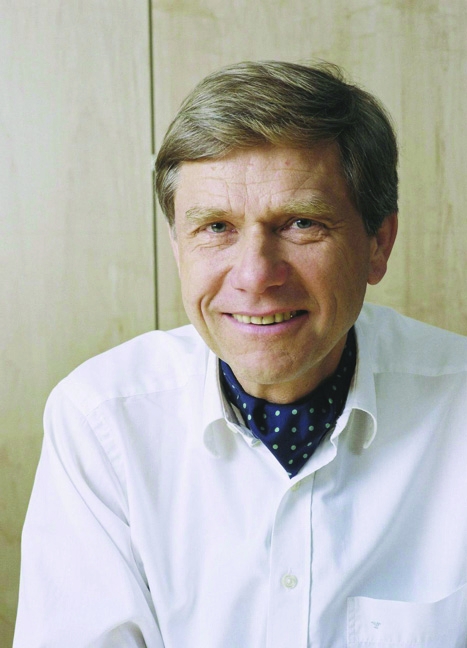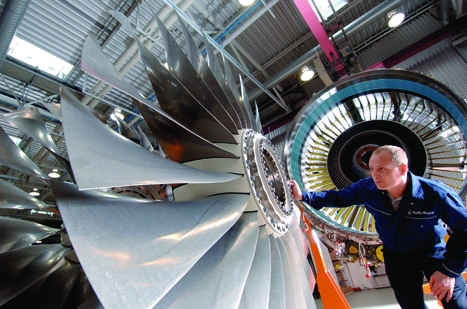
There aren’t many people who can claim to have had a demonstrable effect on the way we live. Cambridge-based entrepreneur Hermann Hauser has more claim than most: as one of the co-founders of Acorn Computing in the late 1970s, Hauser was instrumental in the rise of the personal computer, which plays such a central role in our home and professional lives.
Born in Austria, Hauser has lived in the UK for most of his life. He first came here aged 15 to learn English, and apart from a return to Vienna to take his first degree, has stayed here ever since. His career-long association with Cambridge, both as a university and as a city, has put him at the centre of the so-called ’Cambridge Phenomenon’, which has seen the university launch a large number of companies spinning off from research in its science laboratories and made the region a centre for high-technology business.
Hauser’s investment capital company Amadeus Capital Partners has funded a considerable number of these firms, and it was this that led former secretary of state for business Peter Mandelson to ask him to compile a report on the best way for the UK to capitalise on its strong research base, commercialising products and services from university-stage research. The answer Hauser came up with is a series of intermediate technology innovation centres, similar in function to the highly successful Fraunhofer Institutes in Germany.
These centres, Hauser recommended, should be known as Clerk Maxwell Centres, after the 19th-century Scottish physicist (and Cambridge alumnus) James Clerk Maxwell, who first realised that light was an electromagnetic wave and, indeed, that electricity and magnetism were inextricably linked. ’If you want to brand something, I feel it’s worthwhile choosing the name of one of our many distinguished scientists,’ he said. ’But it doesn’t matter what the name is, as long as we brand it as something. We need a name that we can trust and that industrial partners can feel affinity with.’
The idea behind the Clerk Maxwell centre proposal is that they should take technologies from university labs - where they are normally taken as far as proof-of-concept or technology-demonstrator level - up to the stage where they can be taken to market by an investor. Hauser said: ’It used to be the case that a company could develop a technology from initial concept to market; AT&T’s Bell Laboratories, for example, was a wonderful lab, probably producing more Nobel Laureates than any other research lab of any company. Once the research was done, they’d spend 10 times as long developing it into a product, and then the company could also take it to market. That’s why, for a long time, the US had the best telecom system in the world.’
Such corporate labs also existed in the UK, such as British Telecom’s Martlesham laboratory and GEC Marconi’s central research. But since the 1980s they have been gradually closed down, replaced by a philosophy exemplified by California’s Cisco Systems. ’It doesn’t have much central research, but it does have a good corporate venture capital arm, which looks at the local Silicon Valley start-ups, invests in them and buys some of the best developments, rolling them out through its centres worldwide.’

But this approach is not, Hauser argues, an ideal method; translational centres are a better model, especially in the UK where a world-leading research base is still underexploited. ’Britain is second only to the US when it comes to quality research; in fact, if you look at the best papers per pound invested, we are number one in the world. But when it comes to commercialisation of products or services, we are not so good.’
The Cisco model is only relevant for technologies that are already fairly near the market, he explained. ’The Clerk Maxwell Centres would work a bit upstream of that.’
Hauser believes that the UK would need ’only a small number, perhaps a handful’ of Clerk Maxwell Centres. Why so few, when Germany has a network of 60 Fraunhofer Institutes? ’They have opened 60 over 60 years,’ he said, ’and they are successful because they fit snugly into the industry fabric that Germany has, which is different from Britain’s industrial sector. We’ve got to find our style, and we have to learn from the positive aspects of Fraunhofer, such as a third of the funding coming from industry.’
When I first talked to our scientists about how to engineer their research into a real product rather than a scientific idea, I got brushed off. I find that practically none of that attitude remains
This, he said, is a particularly important criterion and should be a major factor in deciding whether to set up a centre in a particular sector at all. ’If you can’t get industry interested enough to put in their money, then it’s a sign you shouldn’t be doing it,’ he said. The rest of the funding should come from government, with another third devoted to infrastructure and the remainder underpinning the research itself.
Each centre should cost between £50m-£100m over 10 years, he added. ’They would be quite major undertakings, with 50-100 people working in a very concentrated way. It’s a question of focusing down on things we do really well here, where it’s appropriate to invest on that large a scale; although it is £10m per centre per year, which isn’t a huge amount.’

So which sectors should have a Clerk Maxwell centre? ’It’s obvious that something exciting is happening in regenerative medicine; we produce more quality stem-cell papers than anywhere else in the world and it has the potential to completely restructure the pharma industry.’ Renewable energy, future internet technologies, plastic electronics and advanced manufacturing are also strong candidates for the Clerk Maxwell treatment.
But it’s not going to be simple to work out the best way to attack these sectors, and each centre might work in a very different way. ’For example, everyone agrees that regenerative medicine is going to be big, but how do we define its theme well enough to design the Clerk Maxwell centre?’
The art of translating a scientific principle into a product or service is, of course, engineering, and Hauser believes this is an underrated term in the UK. ’But I feel a big change in the culture over the past 25 years,’ he said. ’When I first talked to our scientists about exploitation, commercialisation and how to engineer something into a real product rather than a scientific idea, I got brushed off. I find that practically none of that attitude remains. There’s a willingness for science to engage, and an eagerness to see research being turned into products.’
This, he added, is the way forward. ’If we want to defend ourselves against upcoming nations, the only way we can do that is by getting the best economic value out of our science. We’ve seen the knocking-down of silos between science and engineering at several UK universities, and that is at the core of the idea of Clerk Maxwell Centres.’
Hermann Hauser Biography
Electronics polymath, venture capitalist and entrepreneur
Education
1969 MA in physics, University of Vienna
1972 PhD in physics, Cavendish Laboratory, University of Cambridge
Career
1978 Founded Acorn Computing with Chris Curry; instrumental in development of ARM microprocessor
1985 Olivetti takes over Acorn; Hauser becomes vice-president for research
1986 Co-founder of Olivetti Research Lab at Cambridge
1988 Founded Active Book Company; later acquired by AT&T
1990 Involved in spin-out of Advanced RISC Machines from Acorn
1993 Co-founder of Advanced Telecommunications Modules
1996 Co-founder of Amadeus Capital Partners investment company
2001 Co-founder of Hauser-Raspe Foundation to advance education
2001 Honorary CBE ’for innovative service to the UK enterprise sector’
2004 Joins government’s Council for Science and Technology
2009 Lead author of the ’Hauser Report’
Q&A Need for a national strategy
Why do we need Clerk Maxwell Centres now, when everyone is talking about cuts?
There’s a race between nations to commercialise research into products and services, and it’s intensifying. The speed that India and China can bring researchers to bear onto a problem is second to none, and other nations with these intermediate technology centres use them to good effect. Other countries have national strategies where they think a new sector might appear that could be important for the country, and they’re willing to make the investment. There is no way to get away from having a national strategy; this is an international competition, and if we don’t have one, we’ll lose.
How have other countries made them work?
The most prominent example is the Fraunhofer Institutes in Germany, of which there are 60. Taiwan has ITRI, and that has created arguably the world’s most successful flat-panel display sector. South Korea has ETRI, and that’s led to a semiconductor manufacturing sector that dominates the world. The Americans will always very proudly tell you that they don’t need these centres, they don’t like government interference and they have a purely capitalist system, but if you look at where their government funding goes, of course, they have DARPA, which is larger than any European initiative and, let us not forget, is the cause of the existence of Silicon Valley.
How can we ensure that the work done in the centres directly benefits the UK economy?
We must be able to retain a valuable part of the supply chain. It’s easy to explain to politicians that we want to hang on to part of something, but it’s often less clear what part it is that we want to hang on to. It’s also less clear to politicians that if a market is very large, it will become a global sector, and the supply chain will also be global. There’s no way we could keep the whole supply chain for a global sector within the UK. So we must have an early strategy to work with our international partners to build up the sector, but we must know right from the beginning which valuable part we want to hang on to.
Are there likely to be casualties?
One of the advantages of Clerk Maxwell Centres is that they will create focus and avoid sub-critical initiatives. When we did our study, we found that there are 50 technology centres in the UK that are already getting quite a bit of money; for example, there are 24 nanotechnology centres. When the initial reports were done on funding nanotechnology, two centres were recommended, so we probably have 22 too many. I don’t know why we established 24, it makes no sense at all. We have to focus on only having a few, funding them properly and having the best people working there; that does mean a national strategy, and that’s always a difficult thing to propose.




April 1886: the Brunkebergs tunnel
First ever example of a ground source heat pump?